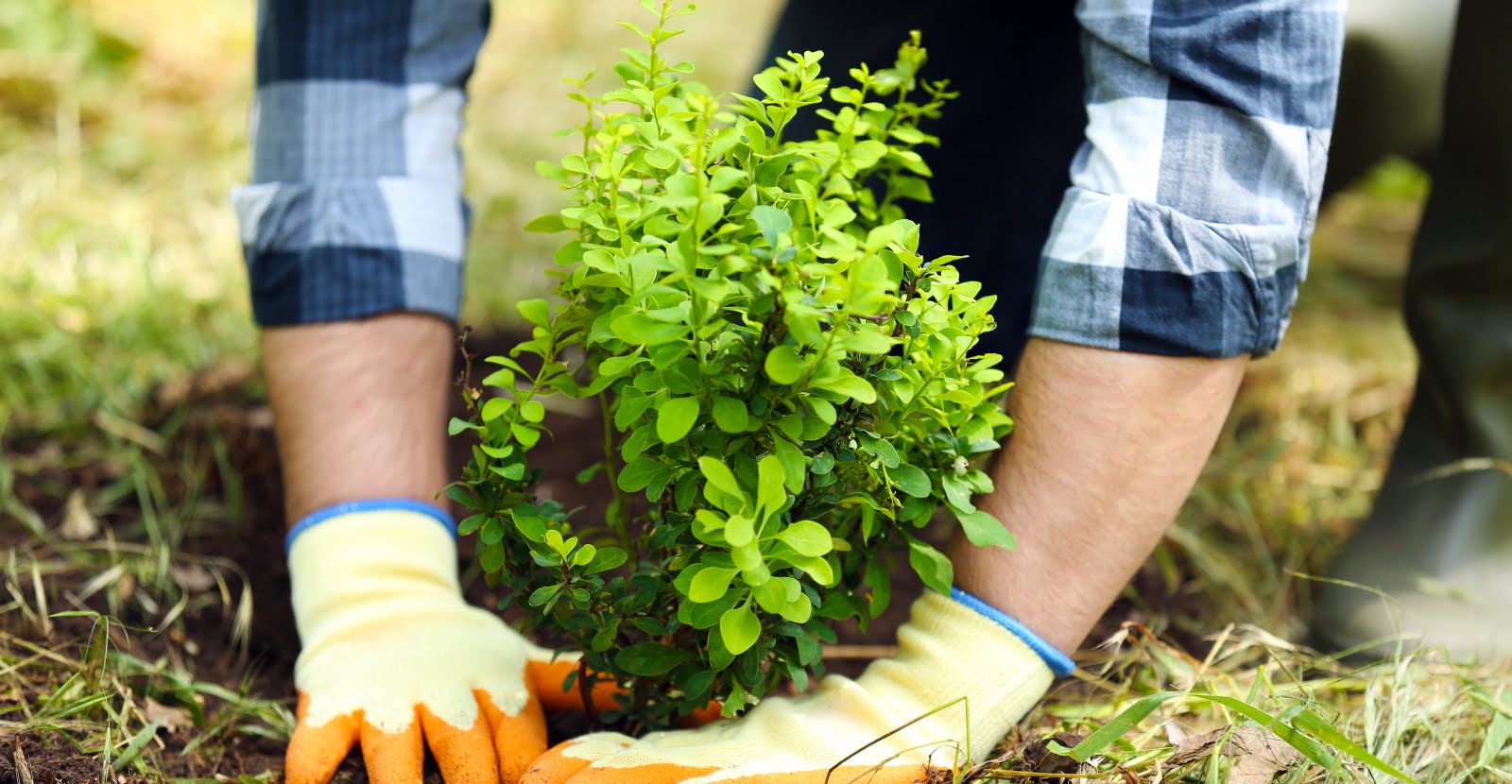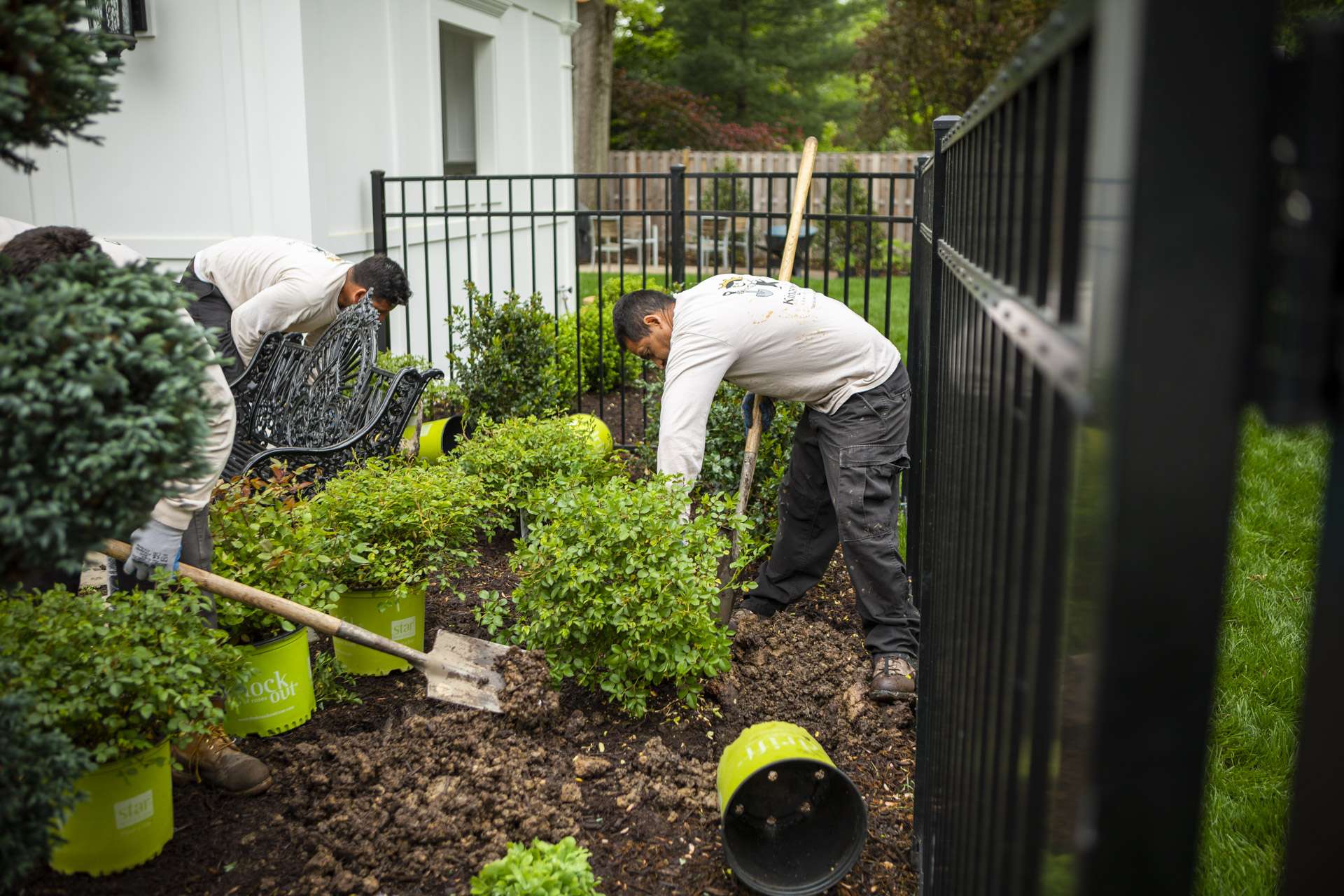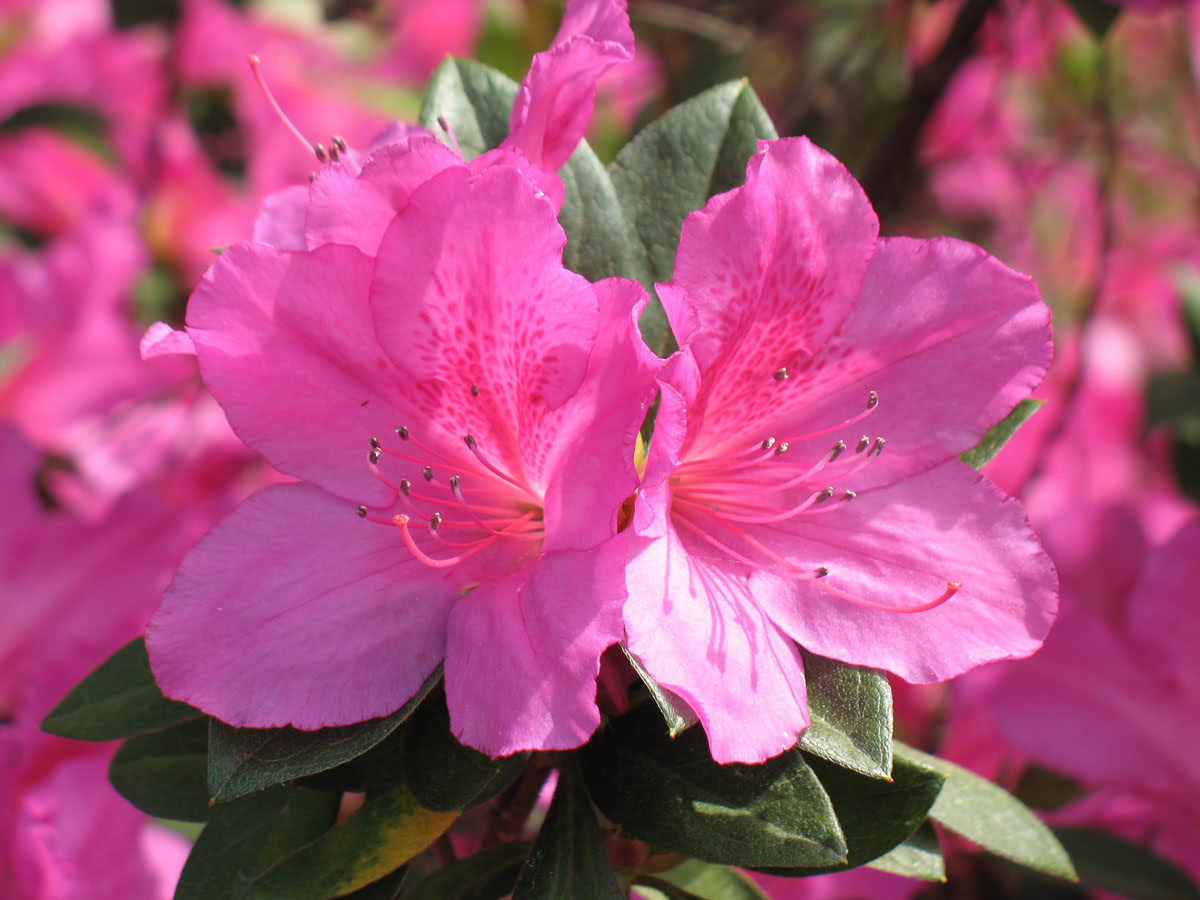Home>Gardening Techniques>Seasonal Gardening>When To Plant Evergreen Shrubs


Seasonal Gardening
When To Plant Evergreen Shrubs
Modified: February 6, 2024
Discover the best time to plant evergreen shrubs for a vibrant and lush garden with seasonal gardening tips.
(Many of the links in this article redirect to a specific reviewed product. Your purchase of these products through affiliate links helps to generate commission for Chicagolandgardening.com, at no extra cost. Learn more)
Table of Contents
Introduction
When it comes to creating a lush and vibrant landscape, evergreen shrubs are an excellent choice. These versatile plants not only provide year-round foliage, but they also add structure and character to your garden. Whether you want to create a beautiful hedge, add privacy to your yard, or simply enhance the aesthetics of your outdoor space, evergreen shrubs are the perfect solution.
However, planting evergreen shrubs requires careful consideration and proper timing to ensure their success. Factors such as climate, soil conditions, and the specific needs of the shrub variety should be taken into account. In this comprehensive guide, we will explore the best time of year to plant evergreen shrubs, as well as the necessary steps to ensure their healthy growth and longevity.
Before diving into the specifics of when to plant evergreen shrubs, it is essential to understand their unique characteristics. Unlike deciduous plants that shed their leaves in the fall, evergreen shrubs retain their foliage year-round. This not only provides a splash of color and texture during the colder months, but also contributes to the overall health and vitality of your garden.
Evergreen shrubs come in a wide variety of shapes, sizes, and colors, ranging from compact and low-growing varieties to towering trees. Some popular types of evergreen shrubs include boxwood, holly, juniper, yew, and arborvitae. Each variety has its own specific requirements in terms of sunlight, soil type, and watering needs, so it’s important to choose the right shrubs for your particular landscape.
Now that we have a basic understanding of evergreen shrubs, let’s move on to the factors that you should consider before planting them in your garden.
Factors to Consider Before Planting Evergreen Shrubs
Before diving into the exciting task of planting evergreen shrubs, there are several important factors to consider. By taking these factors into account, you can ensure that your shrubs thrive in their new environment and contribute to the overall beauty of your garden.
1. Climate: The first and most crucial factor to consider is your climate. Evergreen shrubs have different temperature and moisture requirements, so it’s important to choose varieties that are well-suited to your area. Check the USDA hardiness zone for your region to determine which shrubs will thrive in your specific climate.
2. Sunlight: Most evergreen shrubs prefer full or partial sunlight, but the specific light requirements vary. Some shrubs can tolerate shady areas, while others need direct sunlight for several hours a day. Consider the amount of sunlight your garden receives throughout the day and choose shrubs that will thrive in those conditions.
3. Soil Type: The type of soil in your garden plays a significant role in the success of evergreen shrubs. Different varieties have different soil preferences, ranging from well-draining sandy soil to clay soil. Conduct a soil test to determine its pH level and composition before selecting the shrubs. If needed, amend the soil with organic matter to improve its structure and fertility.
4. Space and Growth Habit: Consider the available space in your garden and the desired growth habit of the shrubs. Some evergreen shrubs have a compact growth habit and are perfect for small spaces, while others grow tall and wide, requiring ample room to flourish. Plan accordingly and ensure that there is enough space for the shrubs to reach their full potential.
5. Maintenance: Evergreen shrubs require regular maintenance to keep them healthy and looking their best. Consider the amount of time and effort you are willing to dedicate to pruning, watering, and fertilizing the shrubs. Some varieties are low maintenance, while others may require more attention.
By carefully considering these factors, you can select the right evergreen shrubs for your garden and create an environment where they can thrive. Now that we have covered the factors to consider, let’s explore the best time of year to plant evergreen shrubs.
Best Time of Year to Plant Evergreen Shrubs
Choosing the right time of year to plant your evergreen shrubs is crucial for their successful establishment and growth. While evergreen shrubs can generally be planted at any time during the year, there are certain seasons that are more favorable than others.
1. Spring: Spring is often considered the best time to plant evergreen shrubs. As the weather starts to warm up and the soil begins to thaw, it provides optimal conditions for root development. By planting in early to mid-spring, the shrubs have ample time to establish their root systems before the hot summer months. This allows them to absorb nutrients and water more effectively, resulting in healthier and more resilient plants.
2. Fall: Fall is another favorable time to plant evergreen shrubs. The cooler temperatures and increased rainfall during this season reduce stress on the new plants and provide ideal conditions for root growth. Planting in late summer or early fall gives the shrubs time to establish their roots before winter dormancy, enabling them to quickly resume growth in the following spring.
3. Mild Winters: In regions with mild winters, evergreen shrubs can also be planted during the winter months. Ensure that the ground is not frozen and that there are no extreme temperature fluctuations. However, it is best to avoid planting during periods of heavy rainfall to prevent waterlogged soil.
It’s important to note that while evergreen shrubs can be planted during other seasons, such as summer, extra attention and care are required to ensure their survival. The hot temperatures and increased water demands during the summer can put stress on newly planted shrubs, making it more challenging for them to establish strong roots.
Prior to planting, prepare the soil by loosening it with a garden fork and removing any weeds or debris. Dig a hole that is slightly wider and deeper than the root ball of the shrub. Gently place the shrub in the hole, making sure it is level with the surrounding soil. Backfill the hole with soil, lightly firming it around the shrub’s base. Finally, water thoroughly to settle the soil and provide much-needed hydration to the shrub.
By choosing the best time of year to plant your evergreen shrubs and following proper planting techniques, you can ensure their successful establishment and long-term health. Now that we have covered the timing, let’s explore how to plant evergreen shrubs in different climates.
Planting Evergreen Shrubs in Different Climates
When it comes to planting evergreen shrubs, it’s important to consider the specific climate of your region. Different climates present unique challenges and requirements for the successful growth of these plants. Here, we’ll explore some tips for planting evergreen shrubs in various climate zones.
1. Hot and Dry Climate: In regions with hot and dry climates, such as desert or Mediterranean climates, selecting drought-tolerant evergreen shrubs is key. Look for shrubs that are adapted to arid conditions and can withstand high temperatures and limited water availability. Examples of suitable shrubs include lavender, rosemary, and oleander. Provide well-drained soil and consider mulching around the base of the shrubs to help retain moisture.
2. Cold and Snowy Climate: In cold and snowy climates, hardy evergreen shrubs that can withstand freezing temperatures and heavy snowfall are essential. Choose shrubs that are native to colder regions and have good winter hardiness. Some popular options include junipers, spruces, and hollies. Apply a layer of mulch around the base of the shrubs in late fall to protect the roots from freezing temperatures.
3. Coastal Climate: Coastal regions have a unique set of challenges, including salt spray and high winds. Select evergreen shrubs that are salt-tolerant and can withstand harsh coastal conditions. Examples include coastal sage, sea buckthorn, and beach rose. Plant shrubs closer to the coast in sheltered areas to reduce exposure to salt spray, and provide windbreaks if needed.
4. Humid Climate: In humid climates, it’s important to choose evergreen shrubs that can withstand high humidity and are resistant to fungal diseases. Look for shrubs with good air circulation and avoid planting them too closely together. Prune regularly to maintain airflow and remove any diseased foliage. Examples of suitable shrubs for humid climates include azaleas, camellias, and hydrangeas.
Remember to consider the specific requirements of the evergreen shrubs you choose, such as sunlight and soil moisture, to ensure their successful growth in your climate. It’s also important to provide proper watering, particularly during the establishment period, and to monitor the moisture levels of the soil regularly.
Now that you have a better understanding of how to plant evergreen shrubs in different climate zones, let’s move on to the steps involved in planting these beautiful and versatile plants.
Steps to Planting Evergreen Shrubs
Planting evergreen shrubs may seem like a daunting task, but by following a few simple steps, you can ensure their successful establishment and growth. Here are the key steps involved in planting evergreen shrubs:
1. Site Selection: Choose a suitable location for your shrubs based on their specific sunlight and soil requirements. Ensure the area has adequate drainage and enough space for the mature size of the plants.
2. Soil Preparation: Prepare the soil by removing any weeds, rocks, or debris. Loosen the soil in a wide area around the planting spot to help the roots establish easily.
3. Digging the Hole: Dig a hole that is slightly wider and deeper than the root ball of the shrub. Place the dug soil on a tarp or in a wheelbarrow for later use.
4. Planting the Shrub: Gently remove the shrub from its container, being careful not to damage the roots. Place the shrub in the center of the hole, ensuring it is level with the surrounding soil. Backfill the hole with the reserved soil, gently firming it around the base of the shrub. Avoid overpacking the soil, as it can restrict root growth.
5. Watering: After planting, water the shrub thoroughly to settle the soil and provide hydration to the roots. Water deeply and slowly, allowing the water to penetrate the root zone. Monitor the soil moisture and water accordingly to prevent drying out or waterlogging.
6. Mulching: Applying a layer of mulch around the base of the shrub helps retain soil moisture, regulate soil temperature, and suppress weed growth. Keep the mulch a few inches away from the trunk of the shrub to prevent moisture-related issues.
7. Pruning: While not necessary immediately after planting, pruning can help shape and maintain the desired size of the shrub. Prune any damaged, dead, or crossed branches. Avoid heavy pruning during the first year as it can stress the newly planted shrub.
8. Maintenance: Provide ongoing care for your evergreen shrubs, including regular watering, fertilizing, and monitoring for pests and diseases. Follow specific care instructions for the particular shrub variety you have planted.
By following these steps and providing proper care, you can ensure the healthy growth and longevity of your evergreen shrubs. Now that we have covered the planting process, let’s explore the essential care tips for evergreen shrubs.
Proper Care for Evergreen Shrubs
Once you have planted your evergreen shrubs, it’s important to provide them with proper care to ensure their continued health and vitality. Here are some essential care tips to keep your shrubs looking their best:
1. Watering: Adequate watering is crucial for the well-being of evergreen shrubs. Water deeply and less frequently, allowing the water to penetrate the root zone. It’s better to water deeply once a week rather than shallowly and frequently. Monitor the moisture levels of the soil and adjust watering accordingly, keeping in mind the specific needs of the shrub variety and the weather conditions.
2. Mulching: Apply a layer of organic mulch around the base of the shrubs to help conserve moisture, regulate soil temperature, and suppress weed growth. Use materials such as wood chips, bark, or compost and keep the mulch a few inches away from the trunk to prevent moisture-related issues and discourage pests.
3. Fertilizing: Depending on the nutrient requirements of your evergreen shrubs, apply a slow-release, balanced fertilizer in early spring. Follow the manufacturer’s instructions for the appropriate dosage and timing. Avoid over-fertilization, as this can lead to excessive growth or nutrient burn. Regularly monitor the color and overall health of your shrubs and make adjustments to the fertilization if necessary.
4. Pruning: Pruning helps maintain the shape, size, and overall health of evergreen shrubs. It is best to prune in late winter or early spring before new growth emerges. Remove any dead, diseased, or damaged branches and thin out the shrub’s canopy to promote airflow and light penetration. Avoid heavy pruning during the first year after planting to minimize stress on the shrubs.
5. Pest and Disease Management: Regularly inspect your evergreen shrubs for any signs of pests or diseases. Common pests that can affect these shrubs include aphids, scale insects, and spider mites. If detected, take appropriate measures such as insecticidal soaps, horticultural oils, or natural predators to control the pests. Also, monitor for any signs of diseases such as leaf spot or powdery mildew, and promptly take steps to address them.
6. Winter Protection: In areas with harsh winters, evergreen shrubs may require additional protection. Apply a layer of mulch around the base of the shrubs in late fall to insulate the roots and protect them from extreme temperatures. Consider using burlap or other materials to shield the shrubs from heavy snow or ice accumulation, especially for more delicate varieties.
By following these care tips, you can ensure the long-term health and beauty of your evergreen shrubs. Regular monitoring, adequate watering, proper pruning, and timely pest management will help keep your shrubs thriving for years to come.
Now that we have covered the essential care guidelines, let’s wrap up this comprehensive guide to planting and caring for evergreen shrubs.
Conclusion
Evergreen shrubs are a wonderful addition to any garden or landscape. With their year-round foliage, they bring beauty, structure, and character to outdoor spaces. By considering factors such as climate, sunlight, soil type, and maintenance requirements, you can select the right evergreen shrubs for your particular needs.
Timing is crucial when it comes to planting evergreen shrubs. Spring and fall are generally the best seasons for planting, as they provide optimal conditions for root establishment. However, with proper care and attention, evergreen shrubs can be planted in various other seasons and climates as well.
During the planting process, it is important to carefully prepare the soil, dig the appropriate hole, and gently place the shrub in its new home. Adequate watering, mulching, pruning, fertilizing, and pest management are essential for the ongoing care of evergreen shrubs. Regular monitoring and timely intervention can help maintain their overall health and address any issues that may arise.
Whether you live in a hot and dry climate, a cold and snowy region, or a humid coastal area, there are evergreen shrubs suitable for your specific environment. By choosing the right shrubs and providing the necessary care, you can enjoy the beauty and benefits of these versatile plants.
Remember that each evergreen shrub variety has its own unique requirements, so it is always beneficial to research and understand the specific needs of the shrubs you choose to plant. Gardening is a continuous learning process, and with time, you will become more adept at caring for evergreen shrubs.
So, get ready to transform your garden into a lush oasis with the addition of evergreen shrubs. With proper planting techniques and ongoing care, these shrubs will thrive and provide you with year-round beauty, privacy, and a sense of tranquility in your outdoor space.










